
Mechanism of Action and Pharmacokinetics Methenolone
Anabolic androgens are steroids derived from testosterone in which it tries to chemically decrease androgenic and virilizing effects and increase anabolic actions. According to their chemical structure and function they are divided into three groups. The second group is that of dihydrotestosterone (DHT) and derivatives, methenolone. Testosterone and androgens easily cross the cell membrane and bind to specific intracellular receptors, these receptors that have been purified are proteins with a molecular weight of approximately 120 kilodaltons. Its synthesis is genetically determined on the X chromosome. DHT binds at a receptor site near a carboxyl terminal group. The steroid receptor complex is activated and transported to the cell nucleus and binds to a DNA receptor site, increasing the activity of RNA polymerase and the formation of messenger RNAs stimulating the synthesis of cellular proteins responsible for the physiopharmacological actions. By intramuscular vis they are pharmacologically active, testosterone is introduced by simple diffusion into daily cells given its liposolubility, in many target tissues it is enzymatically converted to DHT by the action of an enzyme called t5-alpha-reductase, it is more active than testosterone . Biotransformation occurs in the liver, the main metabolites are eliminated in the urine. Maximum concentrations are reached 6-11- days after the injection given. The absolute bioavailability of methenolone enanthate is 100%.
Indications
It is indicated in states that increase protein synthesis is required to improve the general condition of the patient or prevent damage from catabolic processes such as consumptive diseases, cachexia, advanced breast carcinoma or postmenopausal osteoporosis.
Posology
Intramuscularly, the dose is 100 mg every 1 to 2 weeks or 200 mg every 2-3 weeks. Orally 75-150 mg daily taken 6-8 weeks and if used with other steroids slightly lower dose is required (50-100 mg per day). In women the dose is 50-75 mg daily.
Contraindications
Pregnancy. Prostate carcinoma or known or suspected breast carcinoma in men. This medicine is contraindicated during pregnancy because of the possibility of masculinization of the fetus. There are insufficient data on the use of this medicine during breastfeeding to establish potential harm to the baby or a possible influence on milk production.
Precautions and Warnings (in relation to effects of carcinogenesis, mutagenesis, teratrogenesis and on fertility).
If signs of virilization develop, discontinuation of treatment should be considered, preferably after consulting the patient.
It is recommended to monitor patients with any of the following conditions.
Latent or manifest heart failure, renal dysfunction, hypertension or migraine (or history of these conditions) since anabolic steroids may include fluid retention.
Incomplete natural growth since anabolic steroids at high doses can accelerate epiphyseal closure.
Skeleton metastasis or breast carcinoma. In these patients, hypercalcemia can develop spontaneously in both cases and as a result of anabolic steroid therapy. The latter may be indicative of a positive tumor response to hormonal treatment.
However, hypercalcemis must first be treated properly and then resume hormonal therapy, once normal calcium levels have been restored.
Liver failure.
The misuse of anabolic steroids to improve the ability and sports brings serious health risks, so it should be discouraged.
Adverse reactions
The following reactions require medical accompaniment: Virilization and menstrual irregularities in women, irritability of the bladder, gynecomastia. Anaphylaxis, edema, erythrocytosis, gastrointestinal irritation, hypercalcemia and polycythemia, androgenic alopecia, seborrhea and acne in men and women. Carcinoma prostatic hypertrophy and priapism, testicular atrophy, oligoespermia, gynecomastia, sexual impotence, reduction of libido: in women, hirsutism, acne, voice rash, clitoral hypertrophy, mammary and endometrial atrophy, dysmenorrhea, cholestatic jaundice , hypercholesterolemia, hypercalcemia, edema. They are rare adverse reactions during long-term therapy or with high doses, hepatic necrosis, leukopenia, hepatic purpura. Other adverse reactions are: constipation, nausea, diarrhea, infection, redness, pain or irritation at the injection site, alterations in the libido, stomach pain, difficulty sleeping, headaches, anxiety, depression. Generalized anesthesia, skin rash.
Restrictions of Use
Professional use
Overdose
Treatment in case of overdose: There have been no reports of overdose with the product.


أعدت للمنشطات دو
برج ليوا بوكس أبو ظبي
Liwa Tower P.O.
Box 904 Abu Dhabi
(9712) 6131 432
